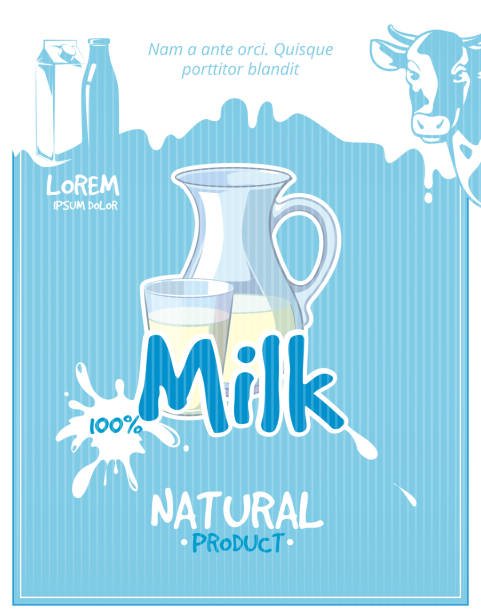Milk, a seemingly simple white liquid, is a complex and fascinating natural food source brimming with an array of essential nutrients. It forms the foundation of many diets worldwide, providing vital sustenance for infants and adults alike. But what exactly makes up this liquid gold? Understanding the constituents present in milk unlocks its incredible nutritional value and paves the way for informed dietary choices.

1. Major Constituents of Milk
The four major constituents of milk are macronutrients, providing the body with its essential building blocks and energy. These include:
- Protein: The primary protein in milk is casein, accounting for roughly 80% of the total protein content. Whey protein makes up the remaining 20%, containing essential amino acids crucial for muscle growth and repair.
- Fat: Milk fat is a complex mixture of triglycerides, phospholipids, and other lipids. It provides essential fatty acids, including omega-3 and omega-6, vital for brain development, cell function, and energy storage. The fat content in milk varies depending on the type (whole, skimmed, etc.) and can range from 0.1% to 8%.
- Carbohydrates: The primary carbohydrate in milk is lactose, a disaccharide composed of glucose and galactose. Lactose provides readily available energy and plays a role in gut health by promoting the growth of beneficial bacteria.
- Minerals: Milk is a rich source of minerals, including calcium, phosphorus, potassium, magnesium, and sodium. These minerals are crucial for bone health, nerve function, muscle contraction, and maintaining fluid balance in the body.
2. Minor Constituents of Milk
Beyond the macronutrients, milk also contains a diverse array of micronutrients, including vitamins and enzymes, that play vital roles in various bodily functions. Some notable micronutrients in milk include:
- Vitamin A: Essential for vision, immune function, and cell growth.
- Vitamin B12: Crucial for red blood cell formation and nerve function.
- Vitamin D: Important for bone health and calcium absorption.
- Riboflavin (Vitamin B2): Plays a role in energy production and metabolism.
- Niacin (Vitamin B3): Important for energy production and cell function.
- Enzymes: Milk contains various enzymes, such as lactase and lipase, which aid in the digestion of lactose and fats, respectively.
3. Species Variations
The specific composition of milk varies significantly among different species. For instance, cow’s milk contains about 3.5% fat, while human milk has a lower fat content of around 4%. Additionally, the protein and mineral profiles can differ, with goat’s milk being particularly high in calcium and potassium.
4. Factors Influencing Milk Composition
The nutritional composition of milk can be influenced by several factors, including:
- Species: As mentioned earlier, different species have distinct milk compositions.
- Breed: Even within a species, breeds can have slightly different milk composition patterns.
- Stage of lactation: Milk composition changes throughout the lactation period. Colostrum, the first milk produced after birth, is rich in protein and antibodies.
- Diet: The feed consumed by the animal can affect the composition of the milk fat.
- Milking interval: The frequency of milking can impact the fat and protein content of the milk.
- Health status: The health of the animal can also influence the milk’s nutritional profile.
5. Understanding Milk Constituents
By understanding the constituents present in milk, individuals can make informed choices about their dietary intake. For instance, those seeking high protein sources may choose milk with higher protein content, while individuals with lactose intolerance can opt for lactose-free milk options.
Furthermore, understanding milk’s nutritional profile allows for personalized dietary modifications. For example, pregnant women may require additional calcium intake, prompting them to choose milk with higher calcium content.
Conclusion
Milk, with its diverse range of macronutrients, micronutrients, and enzymes, stands as a treasure trove of essential nutrients. By understanding the constituents present in milk and how they can be influenced, individuals can make informed dietary choices that support their unique health needs.
Whether enjoyed on its own, incorporated into delicious dishes, or consumed through diverse dairy products, milk remains a cornerstone of a balanced and nutritious diet.
